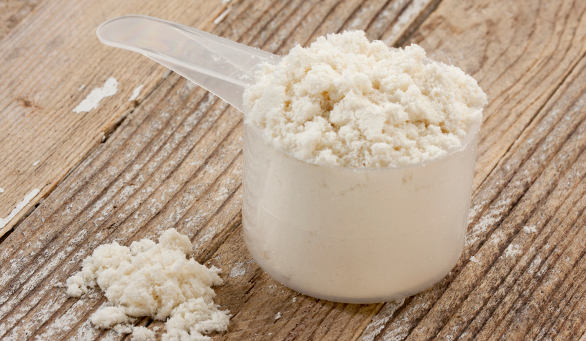Making smart food choices can be challenging for any of us, but student-athletes face a particularly unique set of challenges. They’re balancing the demands of classes, study time, after-school (and sometimes before-school) practice, as well as friends and family, all the while trying to maximize their energy, performance, and recovery.
Here’s a rundown of five top sports nutrition strategies that work, including the scoop on tried-and-true insider tips from fellow sports dietitians Jamie Meeks and Tavis Piattoly on what works best for their student athletes at LSU and Tulane University.
Timing is everything.
Frequent fueling is the name of the game when it comes to effectively optimizing athletic performance.
It’s so essential that universities have implemented “fueling stations” around campus for student athletes.
“At LSU, we have fueling stations in the football weight room, the Tiger Stadium weight room, and the Academic Center that we keep stocked with foods like Greek yogurt, whole-grain bagels with peanut butter, string cheese, hummus, beef jerky, fresh fruit, P3 Protein Packs (a pre-packaged combo of nuts, cheese, and lean meat), and energy bars like Power Bar, Clif Bars, PRO Bars, and Honey Stinger bars,” says Jamie Meeks, sports dietitian and sports nutrition coordinator for LSU athletics.
“The athletes absolutely love these stations, and they use them often. Before, they were going long stretches of time without eating, and now their energy and performance is so much better. We’ve also incorporated satellite stations of fresh fruit, nutrition bars, and chocolate milk at each practice facility, so that it’s easy for athletes to fuel and refuel as often as needed.”
For athletes with intense training demands, the concept of frequent fueling typically starts with breakfast, followed by meals or snacks every two to three hours.
Meeks says that some of the most popular breakfasts and snacks among her student-athletes include whole-grain bagels with peanut butter and honey or sliced bananas, turkey and cheese rolled into a whole wheat tortilla, or microwave Egg McMuffins: “Just microwave the eggs in a mug and plop them onto an English muffin with a slice of cheese,” says Meeks.
For those who don’t have the luxury of fully stocked fueling stations around campus, student-athletes can easily bring similar types of food from their home or dorm: sandwiches, trail mix, ready-to-drink protein drinks, nutrition bars like Nature Valley Protein and Kashi’s Honey Almond Flax or Peanut Peanut Butter. On the go, think Smoothie King, Subway, Jimmy John’s, or even just a grilled chicken sandwich (or two).
It takes a little planning, but it doesn’t have to take much time.
“I tell the teams, ‘None of you can say that you don’t have time to make a quick snack,’” said Meeks. “We do peanut butter-and-jelly-making contests with each team to show them just how fast and easy it really is. The record was like eight seconds — the baseball team won.”
Tavis Piattoly, sports dietitian for Tulane Institute of Sports Medicine, and co-owner of My Sports Dietitian, an online sports nutrition program for high school and college athletes, notes that Eric Reid, a safety with LSU and now the 49ers, would bring eight sandwiches to school every single day. “He was a 160-pound safety as a sophomore in high school, and reached 205 pounds by the time he graduated. Eric is a prime example that planning is key.”
Maximize glycogen reserves.
Simply put, glycogen is the stored form of carbohydrates in our bodies. These carbs power our muscles during exercise, providing an ideal fuel source. And while most of us have more than enough carbs stored for our regular workout sessions, student-athletes often train for hours at a time, for multiple days in a row, and their carbohydrate stores can quickly be challenged, if not depleted nearly entirely.
So when fueling every few hours throughout the day, look to include a source of carbs. But be selective in your carb choices, opting for carb-rich foods that are also good sources of nutrients like electrolytes, vitamins, minerals, antioxidants, and fiber.
One of the common themes of most of the foods at the collegiate fueling stations is that they’re loaded with smart carbs. From Greek yogurt to whole grain bagels to fresh fruit and granola bars, these foods not only provide energy-boosting carbs, they’re also packed with fiber, electrolytes, and antioxidants.
Refuel efficiently
One of the most important elements of effective sports nutrition is optimizing recovery. This process of rehydrating and refueling efficiently starts immediately post-workout; ideally within 20 to 30 minutes.
A 4:1 ratio of carbs to protein has been shown to be most effective when it comes to replenishing glycogen stores — a meal or snack that provides 60 grams of carbs and 15 grams of protein, for example.
“It doesn’t have to be protein powder or supplements, especially if real foods are available,” says Meeks. “Chocolate milk is a huge favorite among the players, as is (peanut butter and jelly) on a bagel with a carton of Greek yogurt — and they each provide that optimal ratio of carbs to protein.”
For those who have a sweet tooth that just can’t be tamed, post-workout is the time to indulge. Muscle cells are like sponges, ready to soak up and replenish with these fast-digesting carbohydrates. And including a source of protein can enhance this recovery process.
Some of my clients’ favorite well-timed-so-not-so-guilty indulgences that can double as recovery snacks include PopTarts or cookies with milk or chocolate milk, or a kiddie-style cereal with low-fat milk or soymilk.
Hydrate, hydrate, hydrate
Staying well hydrated is essential for sustaining optimal energy levels, as well as preventing muscle cramping and maintaining a safe core body temperature.
Hydration is an ongoing process, says Meeks. “You can’t just slam back a bunch of water all at once and expect to properly hydrate.” Instead, it’s key to continually hydrate in the days and hours leading up to practice as well as events — and it’s not just fluids; foods can be hydrating as well.
Yogurt, soup, smoothies, fresh fruits and vegetables all have a high water content, and Piattoly points out that many student-athletes love ready-to-consume protein drinks, since they can serve to cover their hydration needs as well as their recovery needs.
Aim for half of your body weight in ounces of fluid as a baseline (remembering that fluid from any type of non-alcoholic beverage “counts,” as does the fluid from many foods). Step on the scale before and after practice and events several times to get an idea of how much sweat you’re losing, and tack on an additional 16 to 24 ounces for every pound lost.
Sports drinks can be a convenient source of carbs and electrolytes, but if you’re getting these through foods, then water may be sufficient.
For those who tend to experience a lot of muscle cramping, Meeks recommends incorporating more salty foods. One of her most popular tips is to season food with Tony Chachere’s seasoning, along with staying well hydrated. Soups, deli meats, and salad dressings can all provide a significant source of sodium as well.
Supplement wisely.
“Many young athletes head to the supplement store to enhance their performance, when the underlying issue is simply their diet,” says Piattoly. And nutritional supplements aren’t regulated, so student-athletes need to be extremely careful when deciding whether or not to supplement.
“We promote food first, and supplements second — but only if needed,” say both Piattoly and Meeks. “And then we’re very careful about which supplements. Our student-athletes are urged to stay away from anything that may contain some type of stimulant, may be harmful, or may result in a positive drug test. We look for products that are third-party certified by an organization like NSF Certified For Sport.”
NSF has a free app, NSF for Sport, that’s updated regularly with supplements that have been tested and approved for collegiate athletes (some of the more common approved brands include EAS and most CytoSport products).
For student-athletes 16 years or older, Piattoly recommends safe supplements that may enhance athletic performance, including protein powder (20 grams mixed into beverage or food of choice), creatine (five grams pre- and post-workout), and beta-alanine (one gram pre- and post-workout).
And what supplements should you steer clear of, that just aren’t worth the risk?
“The first that comes to mind is Cellucor C, which also happens to be the No. 1-selling pre-workout product on bodybuilding.com,” says Piattoly. “And anything with more than 200 mg caffeine per serving, as well as testosterone boosters, which more than likely contain a banned substance. Also, diet products claiming to enhance weight loss, boost metabolism, or provide a pre-workout rush of energy often contain multiple stimulants, which can elevate heart rate and blood pressure — not good when combined with the demands of an already hot training environment — and can have severe consequences, including stroke or even death.”
The bottom line:
Keep it simple. Nutrition is a science, but as Meeks says, we don’t need to make it harder than it really is. Experiment to find simple, safe, and sustainable tactics that leave you feeling energized and powerful — and we promise, it will be worth it.
Molly Kimball is a registered dietitian in New Orleans. She can be reached at eatingright@nola.com. Comment and read more atNOLA.com/eat-drink. Follow her on Facebook: facebook.com/mollykimballrd and Twitter:twitter.com/mollykimballrd.















